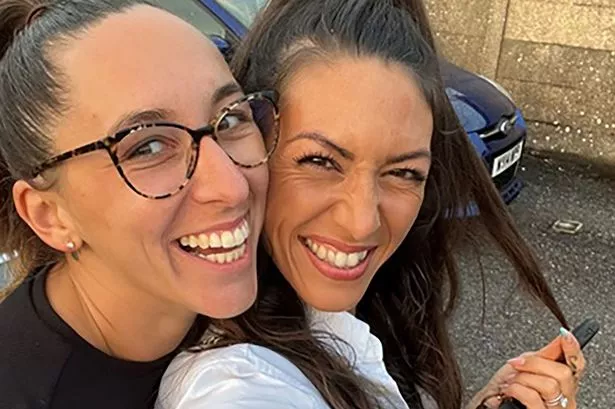Nasen Saadi, a 20-year-old criminology student, stands accused of the murder of 34-year-old Amie Gray. The prosecution’s case hinges on a pattern of disturbing behavior exhibited by Saadi, including a morbid fascination with methods of killing and evading justice. The jury heard testimony from Saadi’s criminology lecturer, Dr. Elizabeth Carter, who described Saadi’s persistent and unsettling line of questioning in her classes. He frequently posed hypothetical scenarios revolving around the perfect murder, often focusing on how to dispose of a body, obscure forensic evidence, and manipulate investigative procedures. Dr. Carter recalled Saadi’s demeanor during these inquiries, noting a detached curiosity that lacked the typical academic engagement of other students exploring similar topics. She described feeling increasingly uneasy with his questions and eventually reported her concerns to the university’s safeguarding team, though no formal action was taken at the time. This testimony paints a picture of a defendant with a preoccupied interest in the very crime he now stands accused of committing.
The prosecution further elaborated on the nature of Saadi’s inquiries, revealing a calculated and methodical approach to his morbid curiosity. He probed Dr. Carter about various methods of disposing of a body, including burial, dismemberment, and acid dissolution. He also questioned the efficacy of different forensic techniques, such as DNA analysis and fingerprint identification, demonstrating a concerning awareness of the investigative tools employed by law enforcement. The prosecution argued that these questions were not merely academic inquiries but rather a calculated effort to gather information that could be used to plan and execute a murder. They emphasized the chilling contrast between Saadi’s youth and the sophisticated nature of his questions, suggesting a mind consumed by dark thoughts and a disturbingly practical approach to the act of killing. The prosecution presented this line of questioning as evidence of premeditation, arguing that Saadi’s fascination with murder transcended mere academic interest and manifested into a sinister plan.
The defense, however, countered this portrayal, arguing that Saadi’s inquiries were solely driven by his intellectual curiosity and passion for criminology. They emphasized the importance of academic freedom and the right of students to explore even controversial topics within the confines of a classroom setting. The defense attorney, Mr. David Miller, characterized Saadi as a bright and inquisitive student with a keen interest in the darker aspects of human behavior. He argued that Saadi’s questions, while unsettling, were no different from those posed by countless other criminology students exploring the complexities of criminal psychology and forensic science. Mr. Miller cautioned the jury against conflating intellectual curiosity with criminal intent, urging them to consider the context of Saadi’s inquiries and not to jump to conclusions based solely on the disturbing nature of his questions. He further emphasized the lack of any direct evidence linking Saadi to the murder of Amie Gray, suggesting that the prosecution’s case relied heavily on circumstantial evidence and subjective interpretations of Saadi’s behavior.
The trial also delved into the relationship between Saadi and the victim, Amie Gray. The prosecution presented evidence suggesting a prior connection between the two, although the exact nature of their relationship remains unclear. Witnesses testified to seeing Saadi and Gray together on several occasions in the weeks leading up to the murder, although no one could confirm the nature of their interactions. The prosecution suggested a possible romantic entanglement or a more sinister dynamic, hinting at a potential motive for the crime. They argued that Saadi’s fascination with murder, combined with a personal connection to the victim, provided a compelling motive for him to commit the crime. Furthermore, the prosecution highlighted the absence of any other credible suspects, emphasizing the circumstantial evidence pointing towards Saadi as the perpetrator.
The defense, however, vehemently denied any significant relationship between Saadi and Gray, portraying their encounters as fleeting and inconsequential. Mr. Miller argued that the prosecution’s attempts to establish a connection between Saadi and Gray were based on flimsy evidence and speculative interpretations. He emphasized the lack of any concrete evidence linking Saadi to the crime scene or to any direct interaction with Gray on the day of the murder. The defense presented alternative theories regarding Gray’s death, suggesting other potential suspects and emphasizing the lack of a clear motive for Saadi to commit the crime. They maintained that Saadi’s interest in criminology was entirely academic and that the prosecution’s attempts to portray him as a cold-blooded killer were based on prejudice and misinterpretations of his intellectual curiosity.
The jury now faces the daunting task of sifting through the conflicting narratives and weighing the evidence presented by both sides. The prosecution’s case rests heavily on circumstantial evidence, including Saadi’s morbid fascination with murder and the suggested connection to the victim. The defense, on the other hand, maintains Saadi’s innocence, arguing that his interest in criminology was purely academic and that the prosecution’s case lacks concrete evidence. The jury must determine whether Saadi’s inquiries were merely the product of an inquisitive mind or a chilling foreshadowing of a violent act. The fate of Nasen Saadi hangs in the balance, as the jury deliberates on whether his fascination with the macabre transcended academic curiosity and manifested into the tragic reality of murder.














